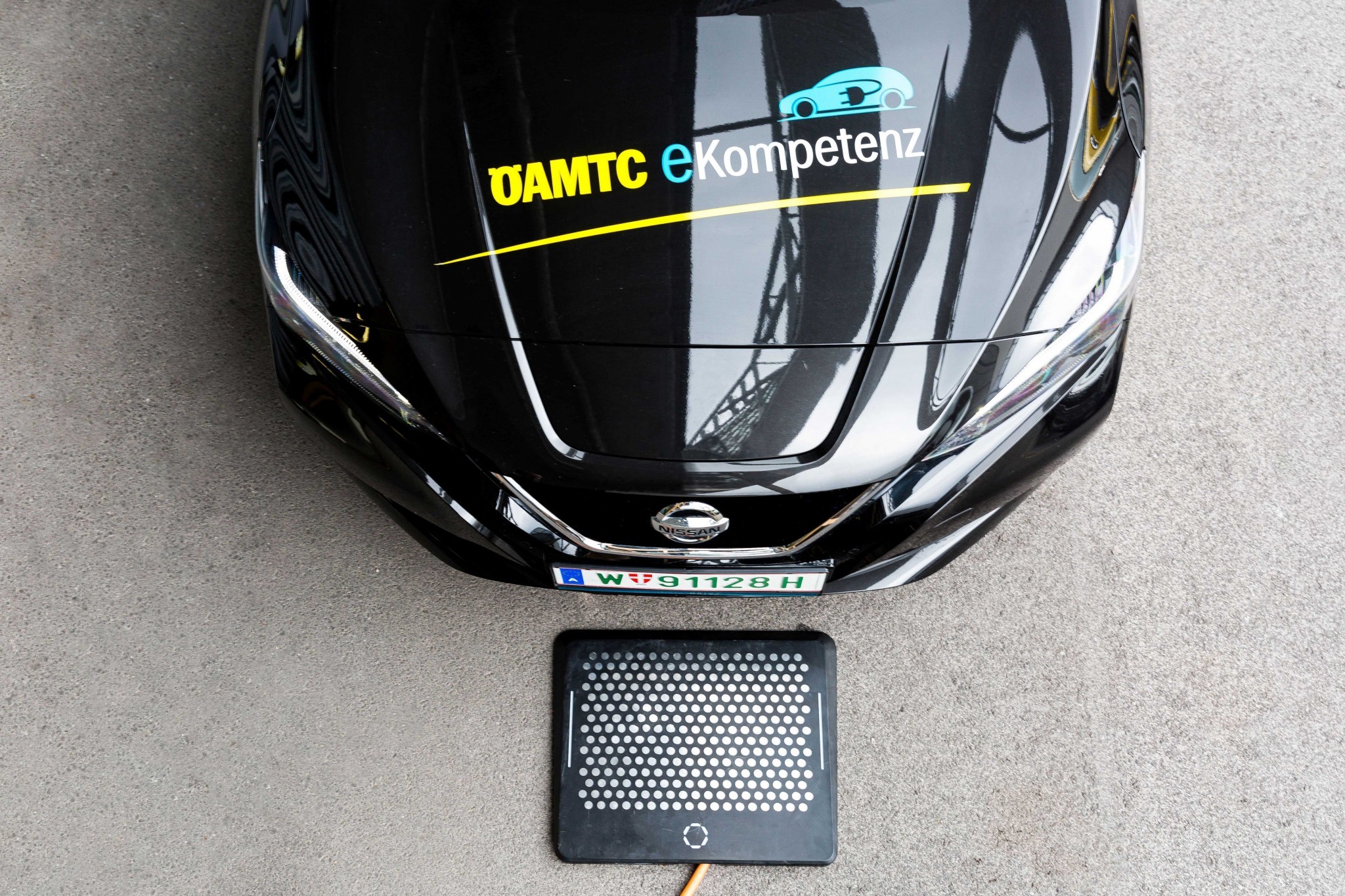As the electric mobility transition picks up speed, the most innovative car makers are working to introduce new generations of highly automated electric vehicles with autonomous capabilities for driving and charging. When an electric vehicle can park on its own, it should also charge itself immediately afterwards. Matrix Charging from Easelink is an especially promising and fully automated charging technology. The system consists of a vehicle unit attached on the vehicle’s underbody (Matrix Charging Connector) and an infrastructure unit at the parking space (Matrix Charging Pad). Once the vehicle has parked above the pad, the connector lowers from the vehicle’s underbody and connects to the pad on the parking space. The vehicle is then automatically charged over the conductive connection. The pad can be embedded flush into the parking space surface and is extremely robust, withstanding wheel loads of up to 2500 kg and all kinds of weather.
ÖAMTC is a leading mobility club that is actively testing and evaluating future solutions for autonomous charging of electric vehicles. “Among our club members, we see a rising demand for user convenience when it comes to electric vehicles. Matrix Charging greatly simplifies the charging process by eliminating the cable. The technology offers superior charging power and efficiency compared with inductive charging while also costing less,” says Thomas Hametner, head engineer at ÖAMTC. As part of a recently established development partnership between ÖAMTC and Easelink, the mobility club is testing the Matrix Charging solution in its own electric car fleet.
This is also the first time a VW ID 3 is charged with Matrix Charging. Insights from this testing will enter into the continuing serialdevelopment. “ÖAMTC is assisting in the development of Matrix Charging by highlighting important customer needs in all relevant charging scenarios as valuable inputs to the development process. The great potential of this technology lies in its suitability for home garages in addition to larger rollouts in public spaces,” adds Thomas Hametner.
“Matrix Charging matches the advantages of inductive charging by offering similar robustness to weather and wheel loads while eliminating barriers. At the same time , it offers the cost advantages of cable-based charging. All in a single technology,” explains Hermann Stockinger, founder and CEO of Easelink. Matrix Charging can be easily installed directly in a parking space, flush with the surface. No charging columnor collision protection are required. In other words, it does not create any barriers or take up any valuable pedestrian space in urban environments. The advantages of Matrix Charging are currently on display in a number of pilot projects during the lead
-up to series production.
ÖAMTC is lending its extensive vehicle expertise to these pilot projects. “The prototype of the Matrix Charging vehicle unit used in the pilot projects is easy to install in the pilot vehicles thanks to its simple technical interfaces and compact packaging,” says Christian Klejna, electromobility expert and technical instructor at ÖAMTC.
www.easelink.com
 Top View Vehicle and Matrix Charging Pad. easelink.com
Top View Vehicle and Matrix Charging Pad. easelink.com